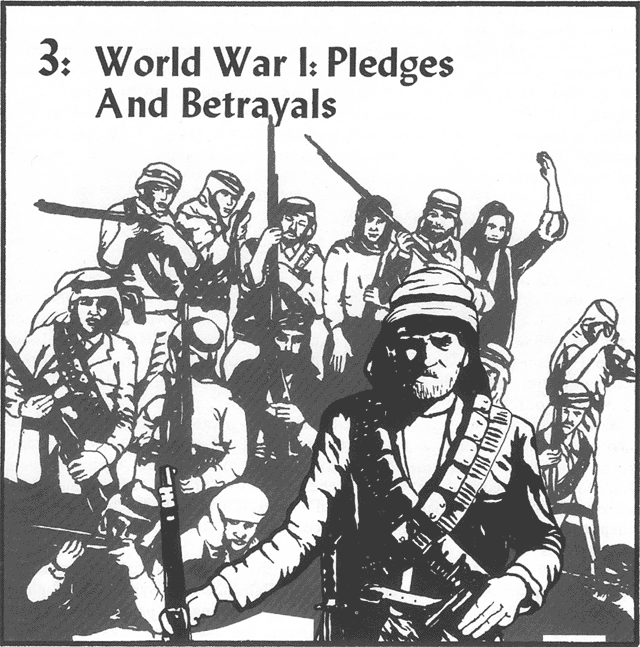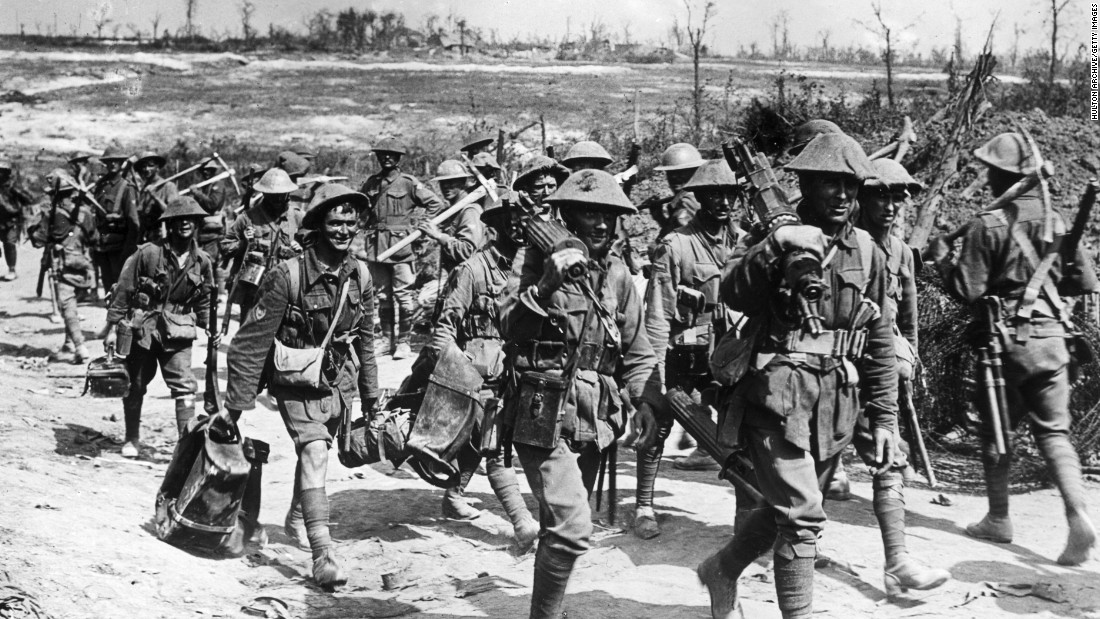British and French Ignore Previous Pledges to Arabs;
Will Keep Control of Iraq, Syria After War.
Special to The Great War Project.
(6-9 January) While the world is focused intensely on the war in Europe, Britain and France are working hard to determine what the Middle East will look like after the war.
Two diplomats are meeting in these early days of 1916. Their task: To trace the boundaries of the new states emerging in the Middle East.
For the British, a diplomat named Mark Sykes. For the French, Francois Georges-Picot. Sykes and Picot. Between just the two, they hold in their hands the future of the Middle East – Syria, Lebanon, Iraq, Arabia, and Palestine.
“The stage was set,” writes historian Scot Anderson, “for one of the strangest – and with the benefit of hindsight, most destructive — diplomatic accords ever penned: The Sykes-Picot Agreement.”
This is not the first attempt to draw the post-war boundaries of the Middle East. Earlier, the British reach a secret agreement with the Emir Hussein, leader of Arabia, to carve out a great united Arab state from the territories controlled by the Ottoman Empire.
But writes Anderson, “In just a few days of meetings in early January 1916, two mid-level diplomats….cobbled together a future map of the Middle East that bore absolutely no relation to the one envisioned and agreed to by Emir Hussein.”
“Instead, French imperial avarice fueled British imperial competition, so that the truly independent Arab nation was now to be largely limited to the desert wastelands of Arabia, with the French taking direct control of greater Syria, and the British taking outright all of Iraq.”
Observes Anderson: “It was in these enclaves that the negotiators’ cynicism was most naked; since neither Sykes nor Picot believed the Arabs were truly capable of governing themselves, they could pledge independence for these enclaves secure in the knowledge that they would end up as British and French vassal states.”
Sykes and Picot also separate Palestine from the other Arab territories, thus setting the stage for unending conflict in that territory in the years to come.
The agreement – which will remain secret for months and be signed later in 1916 – is not shared with either Emir Hussein, nor with the British diplomats who made the agreement with Hussein and who believe Britain ought to keep its promises.
In other developments at this moment in the war, the British are facing unexpected strength from the Ottoman forces in Mesopotamia, the very territory of Iraq they seek to control after the war.
The British troops are forced to withdraw back down the Tigris river, their plan to seize Baghdad now just another failure.
The British stop their pull back in the city of Kut, determined to retreat no further. In Kut they build up defenses and expect reinforcements. But so there is no sign reinforcements are on the way.
The war has gone no better for the British on the Gallipoli Peninsula in northwestern Turkey. On this January 8th a century ago, the last Allied soldiers leave the peninsula, more than 35,000 troops as well as nearly 3,700 horses.
The toll of this campaign, designed to break through the Dardanelles waterway and seize Constantinople, the Ottoman capital, is enormous.
More than 66,000 Turkish troops lose their lives as well as 50,000 British, Australian, New Zealand, and French soldiers on the Allied side.
The British defeat at Gallipoli has another important strategic benefit, reports historian Martin Gilbert. “The Turks, relieved at the disappearance of their enemy at Gallipoli, transferred 36,000 troops from there to Mesopotamia.”
They play an important role in foiling British ambitions there.
Even in retreat, Allied soldiers at Gallipoli face new dangers.
Writes one British sergeant: A mile from shore, “we were all ordered to go below. At this moment a big magazine on shore was blown up, and we could hear the pieces of scrap-iron falling on the roof of the lighter. The sea was very rough…We were all very sea-sick.
“There was a rumor that we were drifting,” he continues, “in a rough sea, off a hostile shore. But no one seemed to worry much.”
“We had got safely off Gallipoli, a thing which none of us had expected.”




This lesson and the much earlier one regarding Germany’s pre-planning for a European conflict so they could expand in the east (poor Poland, Europe’s football pitch for two world wars) are the two most important historical facts I’ve learned to date. I’ve tried to explain to friends how the current morass within the Middle East was created 100 years ago and they simply don’t understand. They blame it on the US. I explain how our involvement began later and and they give me a blank stare. And then I try to explain… man is that a slog.
Again, thanks for the site and the posts Mike
Totally AGREE! most folks do not know this or remember it or were ever taught this.
The title of the photograph of Australian troops – “Australian troops in withdrawal from Gallipoli” is incorrect. Australian troops at Gallipoli were never issued with Brodie helmets, and the flat landscape and houses in the background are more like France than Gallipoli. The Australian War Memorial identifies this photograph as “Australian machine gunners returning from the front line trenches to their billets, in France. The Australian machine gunners have been identified as members of either the 5th, 6th or 7th Machine Gun Companies, 2nd Australian Division, and are probably walking along a road near Pozieres.” See: https://www.awm.gov.au/collection/EZ0079/
Thanks for the correction.
Truly excellent Mike! Puts everything in perspective. Keep up the great work!
There are many people who still believe that Israel was some sort of American plan to control the Middle East. They have no idea that the US only became a major player in connection with Israel after 1967
Excellent Summary! The past does have a connection with today, and this is a great example! Thank you from The Great War Doughboy Search.